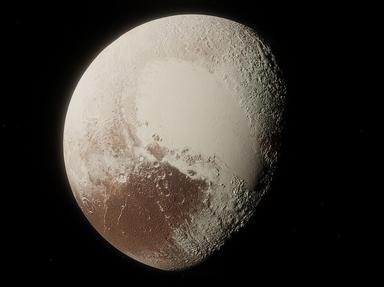Quiz Answer Key and Fun Facts
1. For decades, Pluto was called a major planet. However, the discovery of what celestial body made the IAU (International Astronomical Union) define what a planet is?
2. How far away in astronomical units, or AU, (93,000,000 miles) is Pluto from the Sun on average?
3. Pluto was announced to be discovered in 1930, however, there are several images of it before it was noticed dating all the way back to 1908.
4. Pluto's first moon to be discovered was Charon, found in 1978. Who was the astronomer to discover it?
5. Another of Pluto's moons, Nix, was discovered in 2005. Who/what is Nix?
6. Another moon was discovered along with Nix. What is its name?
7. Since the discovery of Pluto's second and third moons, astronomers have found a fourth and fifth. Which years were they found?
8. Study by astronomers have shown what strange phenomenon occuring on Pluto?
9. What is the most prominent gas of Pluto's atmosphere?
10. Pluto was given the number 134,340 upon its reclassification as a dwarf planet. Had it been listed as such upon its discovery, what would have been its number?
Source: Author
jonthomas
This quiz was reviewed by FunTrivia editor
WesleyCrusher before going online.
Any errors found in FunTrivia content are routinely corrected through our feedback system.
